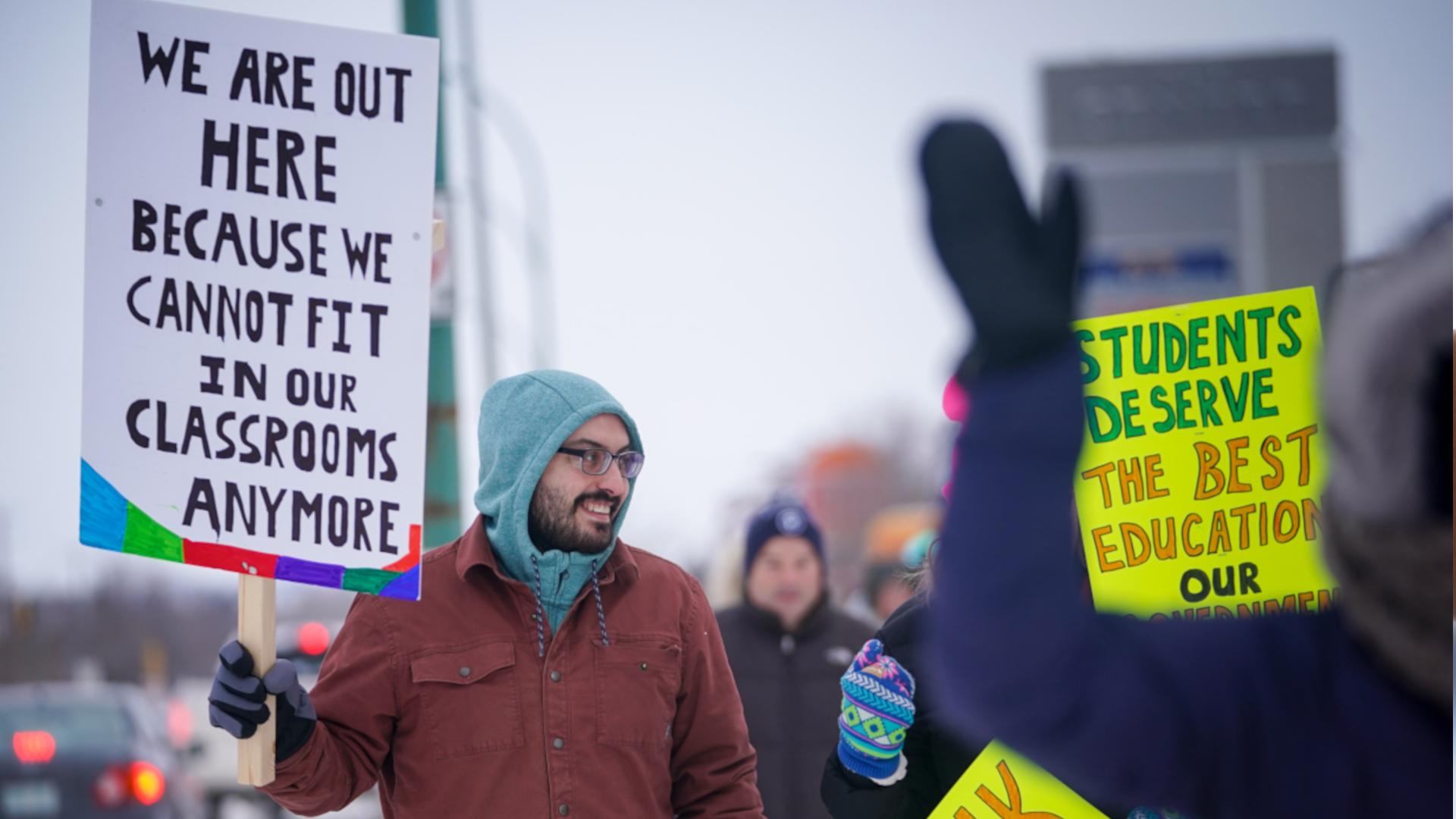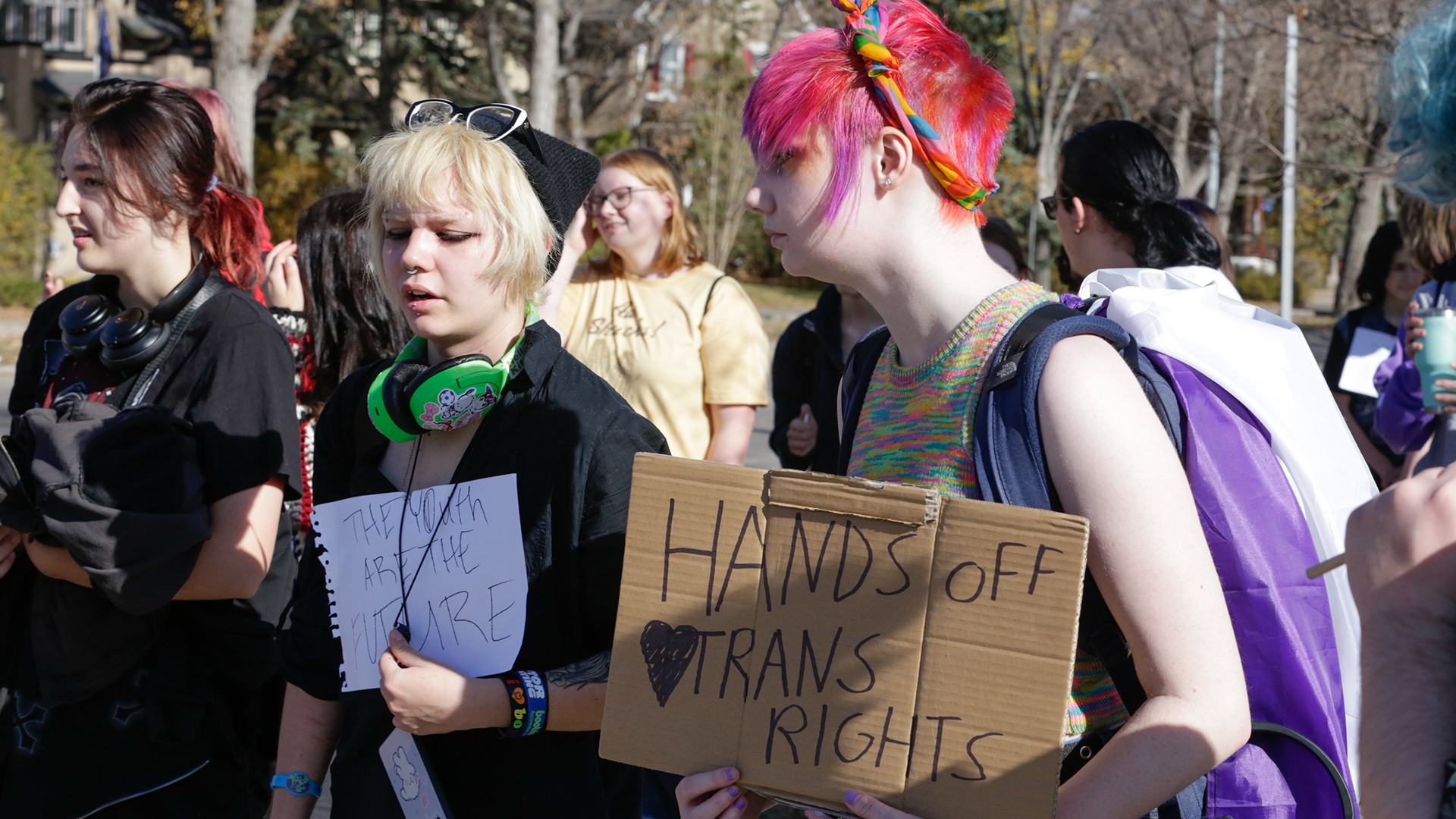
The Saskatchewan Teachers’ Federation and the provincial government are at odds over the issue of class size and composition.
The teachers are on strike after negotiations stalled. They argue class sizes have been slowly increasing over the past several years while student needs have become more diverse and more complex. They and the Saskatchewan School Boards Association say chronic underfunding is to blame.
The province’s ministry of education does not dispute that the issues need to be resolved but says they ought to be dealt with locally rather than provincially. There is an inherent contradiction in this stance given that the province assumed full control over key aspects of educational funding 15 years ago, ending local autonomy.
Regardless of how the teachers’ strike is finally resolved, it’s time to strike a new balance in provincial education policy – retaining the good elements of the current centralized approach while allowing local boards to decide on the allocation of funds and to set education mill rates based on the specific needs and priorities of their schools and communities.
The heart of the dispute is the 2009 provincial decision to set a government-controlled, province-wide education mill rate and establish a province-wide funding formula.
Now, however, the government is attempting to deflect current issues to local school boards, claiming that while the boards have no authority to set property tax mill rates, they have the autonomy to redistribute some of the funds they get from the government via the province-wide funding.
This is illusory. Without any provisions for boards to raise their own funds, they have little choice but to starve some areas of education to fund others.
This illusory autonomy also contributes substantially to the increasing teacher dissatisfaction and burnout as well as a potential decline in the quality of education across the province.
With more than a decade of evidence about the impact of the loss of local autonomy and the knowledge that autonomy with responsibility improves learning outcomes, it is imperative to explore policy alternatives to address this issue for the long term.
The concept of local autonomy over education is distinctly North American. It stems from the model of the one-room schoolhouse in the late 19th century, when education decisions (curricular and financial) were made by the local community and funded wholly by property taxes.
As enrolment grew after the Second World War, education shifted toward centralization, leading to increased provincial control as well as standardized curricula and teacher training.
By the late 20th century, however, provincial fiscal constraints resulted in an approach geared toward efficiency, consolidation and formula-based funding. The last 30 years have been dominated by public discourse regarding taxation fairness, education equity, funding efficiency and local autonomy.
Austerity in public education financing is fostering growing inequities in Canada
In 2006, driven by economic pressures and the aim of establishing a more equitable and consistent tax base province-wide, the Saskatchewan government reduced the number of school districts to 28 (now 27) from 117.
This amalgamation, which was initially voluntary but was subsequently made mandatory, aimed to achieve uniformity in the property tax base across regions and to enhance governance and service efficiency.
In 2009, facing political pressure, particularly from rural landowners and businesses, the government removed the local school boards’ authority to set education property tax mill rates, opting instead for a lower, unified provincial rate.
Then, in 2012, the province overhauled the school-division budgeting process, introducing a new province-wide funding formula alongside a promise of adequate funding. This change stripped school boards of the power to raise local funds for specific needs and initiatives, requiring them to submit zero-based budgets, with no exceptions, to the government.
The mechanism for property taxation stayed the same. Property taxes for education continued to be collected at the municipal level but remitted to the province to be redistributed province-wide.
According to the 2023 Fraser Institute report, over the past 10 years, while inflation-adjusted per-student spending increased in seven out of the 10 provinces, Saskatchewan experienced a notable shift, moving from the highest per-student spender in 2012-13 to the sixth highest in 2019-20.
Similarly, it moved from second to sixth in the same period for operational spending. Although the government invested a record dollar amount in 2023, that funding now also includes early learning, child care and libraries, not just traditional education spending.
Meanwhile, there has been an increase in the diversity of students, including those with special needs, newcomers and those from disadvantaged backgrounds.
The pandemic heightened the need for more one-on-one student support to address learning gaps. Escalating behavioural problems and much-needed language supports are constantly applying additional pressure to already strained educational resources.
In addition, with national reports of growing student mental-health needs that first surfaced at least a decade ago and continue to emerge, the recently developed government-initiated one-size-fits-all pilot-project approaches to mediate some of these challenges seem both too limited in scope and at least a decade late.
The government is wrong to push the responsibility for solving some of these issues down to the school board level, where there are clearly insufficient resources to effectively manage these challenges. By doing so, the province also inadvertently underscores the shortcomings of its own policies. Responsibility and authority must go hand-in-hand.
Responsibility without authority not only transfers the burden without adequate support but also brings to light the systemic issues within the provincial strategy, revealing the need for a more cohesive and well-resourced approach.
To effectively tackle the challenges in Saskatchewan’s education funding policies, the provincial government must refine the existing model by retaining its effective elements and overhauling those that have failed.
The funding policy changes implemented between 2009 and 2012 went too far in terms of centralization – to the point where effective decision-making at the community level was hindered.
Proponents of returning the funding of at least some of the cost of education to local property taxes say local autonomy allows programs to be tailored to community-specific needs.
Those who oppose that idea continue to favour a broader, more equitable resource distribution across regions, viewing education as a societal responsibility best managed through centralized mechanisms.
What is needed now is a hybrid funding model that balances localized decision-making with essential centralized controls.
A balanced approach would recognize the value of certain centralized provisions while reinstating local authority where it can make a positive difference. It would also combine the strengths of both centralized and local governance, aiming to provide equitable, high-quality education for all students in Saskatchewan.
Centralized control would play a key role in ensuring equitable distribution of resources across all regions.
This could include setting minimum funding standards and monitoring to ensure that all students, regardless of their school division, have access to a baseline quality of education. It would also involve overseeing major budget allocations and ensuring adherence to provincial educational standards and objectives.
Centralized provisions should also include mechanisms for addressing disparities in property values, ensuring that schools in less affluent areas are not disadvantaged. This could involve a system of transparent, supplementary funding to support schools in lower-income regions.
Simultaneously, local school boards should be empowered with real autonomy, allowing them to make decisions based on the specific needs and priorities of their schools and communities.
This would include some capacity for local taxation and budgeting, enabling them to address unique challenges such as class size, special education needs and cultural or linguistic programs specific to the needs of their local communities and important to its citizens.
A revised model could blend the strengths of both centralized and local governance, ensuring equitable, high-quality education across Saskatchewan with room for local context, adaptability and innovation.









